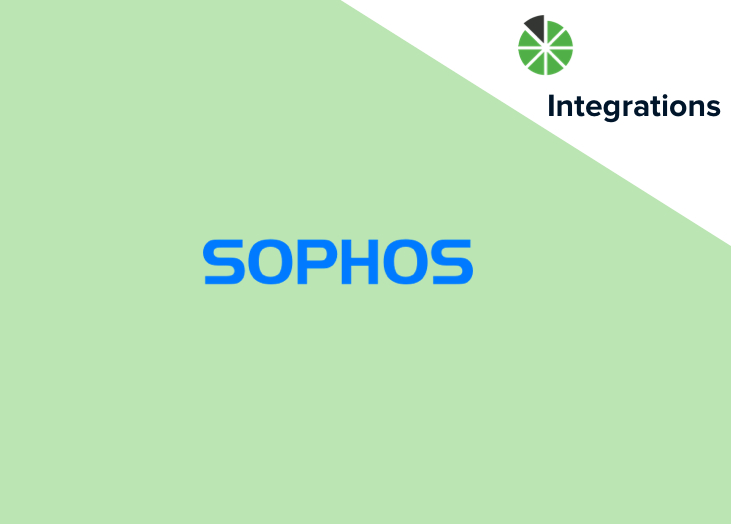As a business leader, goal tracking is likely a cornerstone of your employee management strategy. Goal management is an important way to align your team members and ensure that you’ve got an entire ...
As a business leader, goal tracking is likely a cornerstone of your employee management strategy. Goal management is an important way to align your team members and ensure that you’ve got an entire organization driven by shared key performance indicators (KPIs). In the era of COVID-19 and remote work, the importance of goal setting and tracking is becoming increasingly evident. Let’s face it - managing an entire remote team has its challenges. There are no face-to-face interactions or watercooler moments to rely on that perhaps once served as a casual “what are you up to?” check-in. While it’s necessary to keep employees engaged and productive, no one wants to be micromanaged (or be a micromanager for that matter). But we still want to grow our businesses and keep our employees motivated, so goal tracking remains a priority. The key to implementing goals that will drive business growth is to use an employee goal setting software like BrightGauge to automate that process for you. Before diving into what goal management software can do for your business, let’s explore the necessity of goals a bit more. Types of goals Generally, there are two categories of goals you can assign to your employees: outcome goals and process goals. These two are often intertwined, but the way you measure each is different. An outcome goal is the end result that you’d like to achieve, while a process goal refers to the steps you need to take to achieve your outcome. We like to use a very simple example to help visualize this. Let’s say you want to lose some weight. Your outcome goal would be “lose 5 pounds this year”. Your process goal would be “walk 10,000 steps per day”. With both goals, you can easily measure your progress, and achievement of your outcome goal is dependent upon your process goal performance. Each week (or other determined cadence), you can track and mark progress of each goal. For your outcome goal, you can mark whether you lost or gained weight and how much. And for your process goal, you can track the actual steps you completed each day. So, how does this translate to a managed service provider (MSP)? An example is the desire to improve your organization’s monthly recurring revenue (MRR). You might set an outcome goal to increase your MRR by a certain percentage (increase 5% year-over-year) or to reach a specific number (MRR of $10,000). In order to achieve that outcome, your process goal may be to close X number of new accounts per month, or have your sales representatives increase their outbounding efforts by X% per month. We’ve found that a healthy mix of both outcome and process goals works well. Why you need business goals Assuming that everyone is on the same page and is aware of the desired direction of the organization is just risky business. Accountability measures need to exist to help decision makers evaluate whether everyone is pulling their own weight and charting the right course. If you can’t truly measure performance and progress, how are you analyzing the various areas of your business? How can you tell if you’re growing year over year? Sure, comparing revenue and profit can be telling, but that only paints a partial picture. If you’re bringing in more revenue during a certain period of time, what can you attribute those gains to? How will you know which business tactics were successful and worth replicating? Taking it one step further, who can you attribute successful results to? Is there someone that’s in need of a merit increase? Or perhaps a technician on your team that can benefit from more training? Goal tracking is a powerful way to get answers to all these questions. Not only does it serve to align every person in the company, but goal management also helps business owners carve out a path towards success that makes sense. Goals are like stepping stones that act as a guide without being overwhelming. By focusing on one goal at a time, you can eventually reach your desired outcomes at a pace that’s more easily trackable. Goal management helps you grow your business in a smart, deliberate way. Your team members will know what tasks to focus on and prioritize, they will be held accountable to their actions, and you will have the right data to back future decisions. How to set business goals When you adopt a goal-setting strategy, it’s important that it’s implemented from the top-down. Everyone in the company should be setting and tracking goals. While each goal should tie back to one big, desired outcome, each member of the team should have a different set of goals to work towards. This way, goals are relevant to each person’s role and every team member contributes to the greater good in their own way. As you set and implement the KPIs that are important to your bottom line, use these to drive your goals. Goals and KPIs should tie into one another and ensure that your business decisions are based on factual data. A good rule of thumb is to set SMART goals - Specific, Measurable, Attainable, Relevant, and Timely. Goals should be challenging, but they shouldn’t be so difficult that they end up overwhelming the goal owner to the point where they feel unmotivated and like they’ll never reach the outcome. In our experience, starting off with quarterly goals is an effective way to get this process up and running. At the end of each quarter, performance and progress can be assessed and strategies can be tweaked to better represent your final goal. On the flip side, if you start off with a longer-term commitment like an annual goal, it may be more difficult to stay the course. Whatever approach you take, analyze and iterate often to make the goal management process match the flow of your organization and working style. A few other tips to keep in mind: It’s always good to turn to your peers and colleagues for goal ideas - this absolutely should be a collaborative process Allow for an adjustment period - adopting a new goal-setting strategy means you’re implementing a new process, so the ramp-up period might take a bit Establish regular check-ins to discuss goal progress and performance, whether through 1:1 meetings with direct reports or other method (BrightGauge has a very simple and automated check-in process) Don’t tie performance reviews to goals - the main takeaway here is that goal performance is not black or white; promotions or salary bumps shouldn’t be based solely on whether a goal was hit or missed How to track business goals with BrightGauge Many know BrightGauge for its dashboard and reporting capabilities, which for years have been helping partners organize their data and make meaningful business decisions. Now, as we’ve shifted to remote work, people are turning to their dashboards even more than ever to help their teams work efficiently. You may not be aware that BrightGauge is also a goal management software with a proprietary goal-setting and tracking system that’s a great way to enforce accountability amongst your teams, so everyone can focus on growing the business. With BrightGauge goals, you can set and track goals for each member of the team in a scorecard-like grid. Team members get a weekly reminder via email to check into their goal, which means they mark whether they’re on- or off-track and fill in any necessary context. The corresponding square for that week will turn either green or red depending on progress, making it a very simple and visual way to see how your team is performing at a glance. Goals can be shared company-wide, not just team-wide, which really motivates everybody to be accountable to their tasks and work productively to achieve the desired shared outcome. Some partners have told us that once they’ve adopted BrightGauge’s goal management software, it’s quickly become their favorite feature and they can’t imagine doing business without it. To chat more about how goal management software can drive business growth, contact us and we’ll happily show you BrightGauge in action. For more on goals, check out our whitepaper, The Right Way to Set Business Goals.

As the world shifts to remote work, managers are having to learn new ways to keep their teams motivated and on task. Without the ability to pop over to someone’s desk or have a passing conversation in the hallway, it seems to be a bit more challenging to know what your technicians are working on. This is where dashboards can have a really profound impact. Business intelligence dashboards act as a single source of truth and paint an accurate picture of what’s going on at any given moment. This month, we’re showing you two BrightGauge dashboards that are daily must-haves for working with your remote team. Managing to Zero dashboard *View this sample Managing to Zero dashboard here The point of this dashboard is to manage all metrics to zero within a specific time frame. So, the goal can be to have each metric on the dashboard hit 0 by the end of the day or week. In BrightGauge, you can filter this dashboard for each specific technician and share with them, that way everyone is on the same page and knows what they need to work towards. Here’s a breakdown of the key performance indicators (KPIs) displayed in the Managing to Zero dashboard: High Priority - A count of any currently open high priority tickets. Managing this number to zero ensures that all high priority items are handled in a timely fashion. Unassigned - A count of all currently open tickets that have no technician assigned. Keep an eye on this metric so that all of your customer’s issues and requests are not overlooked. Offline Servers - With your customers relying heavily on their technology during this time, making sure you maintain and manage the amount of servers that are going offline is more essential than ever. New - A count of all tickets that are still in a "New" status. Often this is an indicator that there has not been progress made on these tickets. Highlighting this item for your team should help keep them on track. Breaching Response SLA - This gauge will show any tickets that are within 60 minutes of breaching their response SLA. Managing this metric allows you to stay true to the expectations you have committed to with your customer base. Stale - A count of all tickets that have not been updated in at least 7 days. Make sure you keep this number to zero, so that none of your customer's requests fall through the cracks. Scheduled Today - A focus on tickets that are currently open and scheduled for today. Staying on top of these tickets should also aid in keeping your techs on task. Breaching Resolution SLA - This gauge will show any tickets that are within 60 minutes of breaching their resolution SLA. Managing this metric allows you to stay true to the expectations you have committed to with your customer base. Machines on EOL OS - Ensuring that your customers are on a reliable OS is extremely essential during the new work-from-home environment we are in. Reliable technology will allow them to operate efficiently and in turn increase your value as a partner. Managing to Green dashboard *View this sample Manage to Green dashboard here Another essential, this dashboard gives a view of the current state of affairs. The goal is to have your KPIs consistently within a ‘green threshold’, which indicates that you are on the right track. Metrics that turn to red show areas where you may be falling behind, allowing you to respond quickly and course correct. With BrightGauge, you have the ability to set thresholds based on numbers that you’ve deemed indicative of a problem. When that benchmark is crossed, your gauge will change colors, making it very easy to identify a problem and act on it immediately. In this sample dashboard, we’ve chosen KPIs with arbitrary goals and thresholds set to them just to highlight the idea behind the Manage to Green dashboard. When creating this dashboard for your use, make sure to choose goals and thresholds that match your internal standards. Here are our examples: Average Time to Response (mins) - Keeping your response time low and within an acceptable threshold allows you to provide an exceptional service to your customer base. Make sure this metric fits within internal expectations. CSAT Score - A quick glance at your customer's sentiment towards you. Customer retention is key during these times. Average Time to Resolution (hrs) - Keeping your resolution time low and within an acceptable threshold allows you to provide an exceptional service to your customer base. Make sure this metric fits within internal expectations. % Met Response SLA - A percentage of tickets that have met their response SLA compared to all of the tickets that have been worked that week. Use this gauge to make sure your team is meeting the commitments you have made to your customers. Kill Rate % - This is a quick glance into your team's efficiency. Calculated by taking tickets closed divided by tickets opened, this metric should always stay at 100% or higher. 100% means you have closed as many tickets as have been opened this week. Anything below 100% indicates that there may be some lingering tickets. % Met Resolution SLA - A percentage of tickets that have met their response SLA compared to all of the tickets that have been worked that week. Use this gauge to make sure your team is meeting the commitments you have made to your customers. Billable Utilization % - This calculates the amount of billable time your team has submitted versus their total time submitted. % Tech Time Fulfilled Yesterday - A view of the time submitted yesterday versus their daily capacity set within your PSA. If this number ever falls below 100%, some of your technicians are not putting all of the time allotted in their daily capacity. % Gross Margin - A key metric in determining the overall profitability of your business offerings. The Manage to Zero and Manage to Green dashboards are easy to implement and share and can make a big difference in your team’s productivity and efficiency each week. Having these two rules (‘no red’ and ‘get to 0’) is a quick solution to getting everyone on the same page. To recreate these dashboards for your own teams, check out the links below: Link Manage to Zero dashboard Link to Manage to Zero Recreation Key Link to Manage to Green dashboard Link to Manage to Green Recreation Key Please feel free to reach out to success@brightgauge.com with any questions you have!

Announcing the latest integration to launch at BrightGauge: Sophos. Sophos is a fully-synchronized, cloud-enabled cybersecurity solution that is now available to pair with BrightGauge. With Sophos and BrightGauge, partners can expose metrics pertaining to endpoint health/threat status, identify problematic tenants, and categorize or review alerts. By combining Sophos with BrightGauge, you can strengthen the power of your cybersecurity prevention measures by staying proactive and constantly on top of your data. How to Connect to Sophos It’s quite simple to start working with any of our datasources. To connect to Sophos, click on the green ‘Add a new Datasource’ button, found on your BrightGauge overview page. Find Sophos under the ‘All’ or ‘Security’ categories, click on it, and follow all the prompts. Within a few minutes, you should be good to go. If you need further instructions, check out our Sophos support doc. Not yet a BrightGauge customer? Contact us today and we’ll be happy to schedule a live one-on-one demo. What do I get out of the box? We know how important it is that you get access to your data as soon as possible. After all, your business depends on it. Because of that, we took the time to build out default gauges (KPIs), pre-built dashboards, and report templates, available to you the day you open a BrightGauge account. With Sophos, you get 26 KPIs, 2 dashboards, and 1 report. Gauges (KPIs) The defaults that come with the Sophos integration relate to alerts, endpoints, and tenants. Alerts are notifications generated in Sophos that require administrative action and come in categories such as ‘general’, ‘updating’, and ‘connectivity’. They are classified by severity. Endpoints are defined as a server, computer, or other device protected and managed by Sophos. A tenant is a collection of resources such as devices, events, policies, and people. With these BrightGauge KPIs, track the status of your endpoints, the severity of your threats and alerts, and your total number of tenants. Dashboards Two default Sophos dashboards give you a bird’s-eye view of where you stand at any given time. Access these right off the bat so you don’t miss a beat when it comes to your important data. Reports Custom reports are powerful because they show a real sense of transparency between you and your team or you and your clients, which helps build important long-term relationships. With BrightGauge, build your own reports, or get started with a report template. The Sophos report template shows Endpoint and Alert data for a given period of time. Anytime you’ve got a question about Sophos + BrightGauge, please submit a support request or contact us and we’ll be ready to help!

We’re excited to welcome Christopher Menendez to the team as a Customer Support Specialist! Join us in learning more about the newest member of our growing BrightGauge family… In the beginning Christopher calls Miami his birthplace, but in reality he is a citizen of the world, thanks to his father who served in the military. Christopher feels lucky to have experienced a variety of cultures and lifestyles by living in Florida, Texas, Georgia, North Carolina, Rhode Island, Colorado, Washington, and even Spain. While he initially started college in Washington, he ended up coming back to his roots and graduating from Florida International University with a BA in Psychology. Like many fellow BrightGaugers, Christopher also attended Wyncode, where he completed a Web Development bootcamp. Before joining our BrightGauge fam, Christopher was a belay instructor at Magic City Rock Gym. In rock climbing, belaying is the technique of holding the climbing rope for a climber so that they are safe if they fall off the rock. As he explains it, the short of it is that he taught teamwork and rope management so people don’t drop their friends. As a belay instructor, Christopher also administered practical exams and helped people become better climbers. With his first-rate experience in teamwork, Christopher pursued the opportunity to join our own team. Joining BrightGauge Fun fact: Christopher is not the only Menendez at BrightGauge. Many of you know his cousin, Stephen, who is our Sales Team Lead. Following his cousin’s footsteps, Christopher is really happy to be part of a supportive and welcoming team. He was attracted to the fact that BrightGauge is Miami-grown and has an excellent company culture. In terms of fulfilling career goals, Christopher says he’s most excited about being able to grow his technical skills in such a pro-individual environment. Out of office Outside of work, you can most likely find Christopher doing one of three things: rock climbing, enjoying food, or playing Dungeons & Dragons and other video games. He found a passion for rock climbing when he was a kid and picked it back up a few years ago. What keeps him so enamored with the sport? The absolute attention it requires to lead a route and set up the safety of your team, and the way it keeps your head cleared of clutter. We’re happy to have you here, Christopher!

Ask any prospective employee what they’re looking for in a workplace and chances are that “a great company culture” will be at the top of their list. According to research conducted by Deloitte, 94% of executives and 88% of employees believe a distinct workplace culture is important to business success. From employee recognition to investment in training and career advancement opportunities, and even flexible time policies, company culture can be defined in a myriad of ways. Once you figure out what a strong company culture looks like for your organization, you need a plan for sustaining it. This is where key performance indicators (KPIs) come in. Different Types of Key Performance Indicators Business leaders know that using and tracking KPIs is a powerful way to align team members with company goals, motivate them to be productive, and see what progress is or isn’t being made towards those goals. KPIs should act as a north star, guiding decision-makers in the right direction. Depending on the outcomes you want to achieve for your business, there are several different types of KPIs to consider. Common types of key performance indicators are quantitative indicators and qualitative indicators (those that can be presented as a number versus those that can’t). Furthermore, lagging indicators tend to be output-oriented while leading indicators are more about input (or, outcome-based versus process-based). All departments in a business can be assigned their own KPIs, which can drive the entire organization in the same direction. Like a puzzle, each department is one piece that contributes to the whole, completed set. Just like there are different types of key performance indicators for employees, you may also set KPIs for your clients. This will help you ensure that you’re bringing on the right clients and providing them the right solutions for their needs. Here are examples of key performance indicators for employees: Finance Team KPIs: Cash in Bank EBITDA Gross Profit Margin Sales Team KPIs: Monthly Recurring Revenue (MRR) Current Sales Pipeline Sales Activity Service Team KPIs: Kill Rate Tickets per Endpoint Service Level Agreement (SLA) Missed When it comes to your clients, you may look at KPIs like Activity Level/Health Score or Customer Lifetime Value versus Customer Acquisition Cost. But, how do you gauge company culture? Here’s a look at some more key performance indicators for employees. KPIs for Gauging Company Culture A good way to understand whether or not your company culture is strong and influential enough to keep your employee turnover rate low is to measure an employee’s happiness and productivity level. This can be assessed by looking at certain KPIs related to your employee performance: Employee Satisfaction: You can gather this data through regular surveys and evaluations and it will help you see how happy your employees are and allow you to identify any potential problems. Employee Engagement: Again, this can be gathered through regular surveys and evaluations and will tell you how much effort your employees are willing to put towards their job and responsibilities. Employee Churn: This is a really telling KPI and a must-track for all managers. A high churn rate might indicate that your company’s culture needs improvement or that you need to make better hiring decisions. You can calculate churn by dividing the employees who left during a certain period by your average number of employees. Utilization Rate: Monitoring how your employees are utilizing their time can help paint a picture of their satisfaction with their job. The more productive they are (i.e., the more efficiently they are utilizing their time), the more likely they are to be happy. This rate is calculated by dividing the hours an employee spent on client work by their total hours worked. Revenue per Employee: Like Utilization Rate, Revenue per Employee can tell you about the effort an employee is willing to put into their role and how efficiently you are using your resources. Calculate this by taking your total revenue and dividing it by total employees. There may be more metrics that are specific and important to your organization, so keep in mind that your KPIs may look different from your peers. Also take into consideration that life - personally, professionally - is fluid, so you should be, too. As things change, you may need to shift your KPIs to make sense of your new situation. Or, KPIs may look different from quarter-to-quarter or year-to-year. For a deeper understanding of KPIs and how to use them in your business, download this resource now: How KPIs Can Improve Your Business.

70+ Metrics for MSPs
Key metrics and accompanying formulas to help MSPs skyrocket growth and success!
Get your KPIs

How do you go about managing expectations for new and existing clients? Have you changed your processes as your company has evolved? How often do you review and revise service level agreements (SLAs), proposals, and contracts with your clients? These are the types of questions managed service providers (MSPs) of today need to be asking themselves to ensure that they’re providing clients with an expected level of service. Have you ever found yourself in a situation where you think your clients have unrealistic expectations? How did that mismatch come to be? In this post, we will cover how to approach your proposals and SLAs and why it’s more important than ever. Having the right conversations with clients When expectations aren’t managed, it’s usually because there’s a difference between what clients think they’re paying for versus what they are actually buying from you. Transparency is key here. Clients need to know exactly what they are getting out of your arrangement. On the other hand, as an MSP, you aren’t responsible for fixing every single problem your client comes across, and they need to understand that as well. Now is the time to have open, honest, and sometimes tough conversations with clients. Gone are the days where an MSP sold a technology solution to a client and called it a day. Today, there’s more to it. Security and data are a major part of the picture. Clients don’t just need a tech service. They need an MSP to help them solve a business issue. These issues are typically resolved by focusing on data and understanding how to use data to affect certain outcomes. The problem is, clients expect data services to be automatically baked into contracts and SLAs but they aren’t taking the time to truly understand what their specific data needs are. So, today’s conversations and value propositions need to be centered around data. All roads should lead back to data. Help prospects and clients by leading discovery conversations about what data they need, how they need to use their data, and what data can do for their business. From there, as an expert service provider, you can advise your clients on what and how much they need from your end. As a trusted MSP who wants to continue being a trustworthy partner, we can’t stress enough how abundantly clear you need to make your SLA, proposal, or contract. This is the time to spell things out for them. If you’re presenting your client with various packages at different price points, make sure they are clear on the specifics of each package. Lead with outcomes versus a list of good and services. And make sure to answer all their questions up front. The triangle of data Both you and your client need to play your part in making sure each point in the triangle of data is getting attention. Data needs to be: Secure - be clear on what security means from your end. As an MSP, you are providing technology and services to help a client keep their data secure. However, there are measures your client needs to take on their end to keep themselves protected. Accessible - how and when can data be accessed on personal devices; do employees work from home and need to secure their home computers? Recoverable - can a client access data after someone leaves their company? All three points on the triangle are connected and work in tandem. One cannot be changed without changing the other two. Work through various scenarios where changes would need to happen and what that would look like so that clients know what they can expect from you. In your SLAs, highlight how the technology and services you provide solve the needs of each point on that triangle. For more on how to sell services centered around data and how to work security into the conversation, watch the ConnectWise webinar ‘The New Way to Look at Managed Services’. See a sneak peek below:

While it’s always hard to see someone leave a team or move on, it can be a harsh reality once you jump into what they’ve left behind. Often, you’re left with tasks left undone or a lack of documentation to follow. When planned right, platform and process handoffs should come with a clear overview and instructions for each use case across teams and individuals. Keeping tidy documentation can be tough, especially when you’re a small shop running single team members in multiple roles. We’ve put together this checklist to help any new or existing BrightGauge partners get up to speed on where to begin with organizing and working within an existing BrightGauge buildout. Taking over an existing BrightGauge account If you are new to BrightGauge or have just been assigned as the primary account user on an existing account, follow these tips and steps to get started. Overview video - This quick video gives a great high-level overview of what BrightGauge offers. Watch the video - only 4 minutes! Share with any team members you may want to onboard as well. Attend an in-depth training webinar - Sign up for one of our weekly training webinars OR watch a recorded version here. These weekly sessions offer you the opportunity to attend a one hour deep-dive into all areas of BrightGauge. You’ll learn about datasources available, data syncing, dashboards, automated reports, goals, and more! Create an inventory of what’s already in your BrightGauge - Get organized by creating a log of all users, including viewers, and take note of the dashboards, scheduled reports, and gauges you have built and are actively using. You may reference what comes standard with each datasource through looking it up in our Knowledge Base, and scrolling to the end of the corresponding article. We recommend creating a spreadsheet or using your internal documentation tool to get organized. Be sure to note which team or process would reference that item, frequency of use, definition, and how often it should be updated or referenced. For a great example of organizational bliss, check out this user showcase webinar with Justin Bryant of CSpire on Starting a Service Library: watch the video here. Pro tip: If the account is just too much of a mess, with many of the default dashboards and reports modified from their original version, reach out to support@brightgauge.com. We'll be happy to push out a new set of defaults to your account. Delete what’s not in use - Let’s face it, we’re all guilty of hoarding something seemingly valuable to us. If it was created more than 6 months ago and you’re not using it, get rid of it! Pro tip: On the left-hand side of your gauges overview page, click ‘Unused Gauges’ to get a sense of what you can delete. Read more cleanup tips here. Meet with stakeholders to align on objectives, discuss use cases, and come up with actions you'd like to see as a result of your BrightGauge use. We're here to help! Setup a one-on-one training with a BrightGauge Success team rep. Book your new admin training here. After you’ve organized and cleaned your account and have a general idea of how you’d like to use BrightGauge, it’s time to get formal about your objectives. Map out what is actionable and where you would like to make organizational change and improvements. Turn to “IDEAS”, then keep it “SMART”. IDEAS is a framework for setting key performance indicators (KPIs). Identify the problem What is the problem that you want to solve? Or what do you want to prevent from happening? By starting here, you can tie metrics directly to your desired outcomes. Determine what solves the problem Now that you’ve identified your issues, what are the indicators that might mean progress towards a solution? For example, if you’re looking to improve Customer Satisfaction (CSAT) scores, maybe Average Time to Response is a metric that’ll help you make progress. Establish your KPIs Knowing your issues and what can help you solve them is how you’ll determine the KPIs that are right for your business. At this point, consider where you’ll find the data you need (i.e. what tools can help you track your data?). Analyze the results Now that your data is in, it’s time for a gap analysis. How do your actual results compare against benchmarks you’ve set? Where can you fill in the gaps? Perhaps you need a change in processes or to invest in additional training for your team members. Start from the beginning The process of setting and tracking KPIs is ongoing. On a regular basis, you should assess your results, see what you can learn, and then start the process over. With this framework in mind, you can begin to determine the KPIs that are going to drive each department, and your organization as a whole, towards success. To reach those KPIs, it’s important to set SMART goals. Goals should be SMART (Specific, Measurable, Attainable, Relevant, and Time Based) so that it’s easier to track the progress of meeting that goal. If you’re in sales, it’s not enough to say, “next quarter, I want to close more accounts”. Instead, a SMART goal will be something like, “by the end of next quarter, I want to bring in 10 new accounts that will result in a higher commission for myself and will contribute to the overall revenue goals of our company; I’ll do this by increasing the amount of calls I make from 100 to 150”. When you’re ready to start building By now, you’re probably ready to start building. By all means, go for it! But do keep in mind these last few tips so you can keep your account clean and tidy. Map out the key metrics you’d like to measure by team and individual, and how to make them actionable. Check out this great user webinar that goes into setting expectations with baseline metrics and naming conventions. Plan for your data. List out what you’d like to see on one or multiple dashboards, reports, and goal lists. Think short term and long term, and proactive versus reactive KPIs. Use what’s already built. All integrations in BrightGauge come with pre-built dashboards and gauges and report templates. Check out what’s automatically available to you before trying to build something that may already be there. Pro tip: If the data doesn’t look quite right, you may just need to apply a filter. Always apply a filter at the dashboard or report level before cloning a gauge. This will help keep your account accurate, clean, and organized. All dashboard and report filters override what you have set at the gauge level; keep this in mind as you work with date ranges. Check data accuracy. Make sure you’re using the right dataset. If you’re looking at ticket stats for the last 30 days, check to see that you’re not working with one of our lighter datasets. When in the gauge builder, reference the right-hand column for a review of the time range you’re working within, sync frequency, and description. Click on the name of the dataset there to see the raw data coming in. Always be iterating. Consistently review where you are. It’s never too early, or too late, to evaluate and change course accordingly. This is especially the case with goal setting. If 3 weeks in you find that you’re far exceeding or falling short, adjust and keep a realistic view of where your team and you are at. Show off your work. You’re spending valuable time, effort, and money into building these gauges, dashboards, and reports, so put them to use! Incorporate your data into meetings, presentations, discussions with stakeholders, client visits, and more. For more help, check out these go-to videos, webinars, and articles: How-to Videos Dashboard examples and keys User Showcase Webinars Support queue - we trade tickets for how-to videos Weekly general training webinars In-person workshops Knowledge base documentation This post was written by Danielle, Partner Success Team Lead to BrightGauge. The Partner Success Team is focused on getting you the training and resources you need to help grow your business through team alignment and showing your value to clients. Still not sure of where to begin? Email success @ brightgauge.com.

The global workforce as we know it is undergoing a major shift. More employees than ever before are working remotely or looking for that option from their employer. In fact, a survey conducted by Global Workplace Analytics found that over the last 10 years, remote work has grown more than 90%, a figure that will undoubtedly continue to increase. There’s no denying that telecommuting is here to stay - it’s better for the environment, it is said to have a positive impact on productivity, and it makes people happy given the work-life balance we’re always chasing. For any number of reasons, including COVID-19, you may currently be shifting to a remote work state, but may be wondering how it will affect company goals or the ability to manage individual team members. BrightGauge is a tool that can help your remote teams be successful and remain on the same page. Managing data is critical for remote teams The best way to align team members, whether they are remote or in a traditional workspace, is to keep your eye on data. How do numbers paint a picture of what’s going on in your organization? You can’t manipulate or hide numbers. Data is rooted in truth, so it’s a powerful way to build transparency and trust in business relationships. Data shows exactly what is going on with anything from ticket statistics, sales opportunities, customer satisfaction, revenue, and more and takes the guesswork out of whether or not you’re on track to hit goals. And the best way to manage data is to choose the metrics and KPIs that matter most to your bottom line and then automate how you’re consuming that information. With BrightGauge dashboards and reports, you’ll pull in data from tools you’re already using (like ConnectWise, Autotask, QuickBooks, Customer Thermometer, and more) and view it all on a single pane of glass, keeping things organized and more visible to all team members. BrightGauge data updates in real-time, so there’s no need to worry about being misinformed or out of the loop. Let’s put this in a real-world example. Suppose you’re managing a remote service desk. This is a critical team, as customers interact with your support department probably more than anybody else in your company. On one BrightGauge dashboard, you might view: How many tickets were opened versus closed today Average response time for tickets Support team leaderboard This shows a ranking of your team members based on parameters you set - perhaps most tickets closed today Customer satisfaction scores Stale tickets Tickets opened versus Negative reactions As this data constantly updates throughout the day, you’ll never find yourself wondering what your different technicians are up to. Take it one step further by setting thresholds for certain KPIs - for example, be alerted anytime average response time goes above 30 minutes - so that you can take course corrective action immediately. BrightGauge partner Josh Weiss of LA Creative Technologies has been managing a remote support team for quite some time now and finds that BrightGauge helps his service desk run seamlessly. Though his support team is based in Mumbai, a BrightGauge ticket processing dashboard allows his techs to triage and resolve tickets placed by clients all the way in Los Angeles, with no disruption in response time. Eric Hoffmeister of Innovative Computing Systems already works with a mostly remote engineering team. Given the circumstances surrounding COVID-19, the helpdesk is now 100% remote and managers are learning how to cover work as normal. Through BrightGauge dashboards, admin time per tech is being tracked on an automated, real-time basis. A daily dashboard lets Eric keep a pulse on the team by showing who’s on vacation, whether or not projects are on track, what each engineer’s workload is, and so on, which means time is being utilized properly and efficiently. General tips for remote teams - Use tools like Slack or Microsoft Teams to keep the lines of communication open - Managers and employees should have regular check-ins to talk about progress, roadblocks, and strategy - Follow a structured workday that keeps you in a productive groove - Manage expectations - over communicate what is expected from one another - Stick to deadlines - Be honest with yourself and your team about what can get done To learn more about how BrightGauge can improve visibility for your remote teams, schedule a live one-on-one demo with us today.

We say this over and over - when it comes to building long-term client relationships, transparency is key. You need to show your client the value that you’re bringing to their business so that they understand what their investment is worth and are never left to question why they are paying you. A great way to do this is by sending consistent reports to key stakeholders. Another option made possible by BrightGauge is to share a real-time dashboard with your client. That’s exactly what Peter Kardel, co-founder of Clever Ducks, puts into practice. Clever Ducks is an MSP out of San Luis Obispo, California, focused on serving clients who see tech as a strategic weapon, or something central to their success. Their clients want to cut costs with IT, not on IT. As part of their client retention strategy, Peter and team share a Client Success Overview dashboard that allows them to manage relationships in a proactive way. For example, when it comes to a planning and QBR process, a lifecycle of client’s hardware and software all up and down the stack is established. That way, Clever Ducks can proactively replace gear once it reaches the end of its lifecycle rather than waiting for that equipment to fail. “Something like this makes our operations much less reactive and it’s a much better outcome for the client because, as we all know, downtime is expensive,” says Peter. Peter has found that setting color-coded thresholds on the Client Success Overview dashboard makes the data more compelling and more likely for a client to take notice. “People just know that green is go, yellow means you may want to hit the brakes, and red is bad,” says Peter. “After a while, a client looks at a dashboard, sees red, and wants to take immediate action. It’s an amazing way to support their success and help them prioritize.” In general, the Client Success Overview is a good way to ensure that everyone is on the same page. *View this sample Client Success Overview Dashboard here Included is the client’s ticket trend, which is a nice visual way to tell a story of what’s going on without hiding anything. It provides an opportunity to look at trends and understand what changes need to be made to influence the direction of that trend. With this dashboard, Peter and team avoid bogging clients down with nitty gritty details. Instead, they get right to the point of showing clients that their business is safe and can show where there are opportunities to take advantage of in order to be successful. An interesting KPI they include in the overview is how the clients are rating Clever Ducks. The dashboard is often being seen by C-suites, so these CSAT scores show how team members are (or are not) happy with Clever Ducks’ service. It’s a nice boost for that C-suite person to know that their people are confident in their technology. These days, your workforce won’t tolerate IT that’s confused or unreliable, so having confidence in leadership is becoming ever more important. Finally, a Client Success Overview dashboard makes meeting with clients way more efficient. Instead of bringing a stale report that was printed out before the account manager meets with a client, Peter and team can literally open the dashboard in front of the client during the meeting and look at real-time information, allowing them to get down to business and problem-solving right away. For instances when team meetings are not occurring face-to-face, clients still have access to their important data, day or night. Check out the links below to replicate this type of dashboard for your own clients. Link to Client Success Overview Dashboard Link to Dashboard Recreation Key Please feel free to reach out to success@brightgauge.com with any questions you have!

Have you ever been a part of a professional community or peer group or considered joining one? In such groups, many business leaders turn to their peers for advice on how to grow, both professionally and personally. You’ve likely heard of The IT Nation, ConnectWise’s professional community, but maybe are not familiar with the various events offered by The IT Nation and how they may be useful to you. Here, we’ll introduce you to The IT Nation and all that it encompasses, as well as guidance on which events may be best suited to your specific needs. What is The IT Nation? What does being a member of The IT Nation actually mean? Who’s included in The IT Nation? What’s the difference between The IT Nation and IT Nation Connect? The IT Nation is a global community of technology professionals working to push each other and the industry to new heights. By working collaboratively, sharing best practices, and listening to thought leaders, members can make this industry better and stronger. Members of The IT Nation live all around the world and have different business models and technology stacks to run their companies. The IT Nation is open to any technology solution provider, whether they use ConnectWise solutions or not. By fostering a sense of ‘co-opetition’, all can learn from and alongside each other to navigate the ever-change technology landscape. So how do you get involved in The IT Nation? With events throughout the year and advice from the community available on demand, there are several ways to maximize your experience within The IT Nation. Listen WHO THIS IS FOR: Anybody looking to gain more business insights! With the Stories from The IT Nation podcast series, you’ll hear members of The IT Nation community share advice based on personal experiences running their businesses. Learn how to attract top talent to your organization (including how to appeal to the millennial crowd), identify when it’s time to fire customers, stay relevant to your customers and more. Share WHO THIS IS FOR: ConnectWise partners who want to learn to use the products even better. IT Nation Share user groups are regional, one-day product trainings offered free of charge to ConnectWise partners. Meet other technology providers in your area and get answers directly from ConnectWise product experts on to help you learn how to better use your ConnectWise solutions. Explore WHO THIS IS FOR: ConnectWise partners seeking deeper, in-depth training on all products. Need more than one day of product training? Want training on the full ConnectWise platform, including BrightGauge, Continuum, and IT Boost? Join us in Orlando this summer for IT Nation Explore. This annual three-day product conference will feature over 100 breakout sessions, labs, and panels so every member of your organization can get the training they need to increase efficiency in their daily operations. Connect WHO THIS IS FOR: Business leaders wanting to make their organizations better and stronger. For business owners and leaders who need to know what’s coming next in the industry—and how to prepare their business for the changes that lie ahead—IT Nation Connect offers thought leadership and business building content over three days. Learn from experts in the industry on how to navigate M&A conversations, cybersecurity challenges, how to find and retain top talent, and more. As the largest and longest-running IT conference in the channel, it’s a can’t-miss event every year. This year’s event takes place in Orlando November 11-13. Evolve WHO THIS IS FOR: Specifically for members who have applied and been accepted who want to have honest conversations about work and building legacy. At IT Nation Evolve, business owners can share experiences, engage with peers, and get the resources they need to build their legacy. Members attend events each quarter where they meet with their peers and share progress—as well as hold each other accountable to work toward personal and professional goals. Want to be in the loop on everything that’s happening in The IT Nation? Stay connected through social media to get updates on our events, podcast opportunities, and more.

As a team or business manager, how are you keeping an eye on what your various departments or team members are doing? While no one likes to micromanage, it does make sense to have an awareness of what's going on across the board and how it's impacting the organization's bottom line. With BrightGauge dashboards, it's easy to automate this and kind of take a hands-off approach to monitoring your team's activity. Dashboards give a 10,000 foot view of what's going on in your business, so taking a quick glance at your boards can give you all in the info you need in just a moment's time. Basically, no need to go around asking your team what they're working on, because that information will be accessible to you whenever you want it. Join our webinar to learn more In our experience, it always helps to see how others are putting dashboards and other features to practice, so please join us for the next installment of our User Showcase webinar series. Benjamin Pearce, president and CEO of ACP Technologies will share how he has set up dashboard playlists that inform on team activity across departments. Each day, 5 different dashboards rotate on his screens, so he can easily see what sales and support are working on. Benjamin will give you a live overview of these boards and will also cover important KPIs, like: Activities Ahead vs Overdue Long-term Revenue Opportunities Service Activity This webinar takes place on Wednesday, March 11th, at 3:00pm EST. Save your seat now! Even if you can't make it, be sure to RSVP so we can send you a recording of the webinar.












